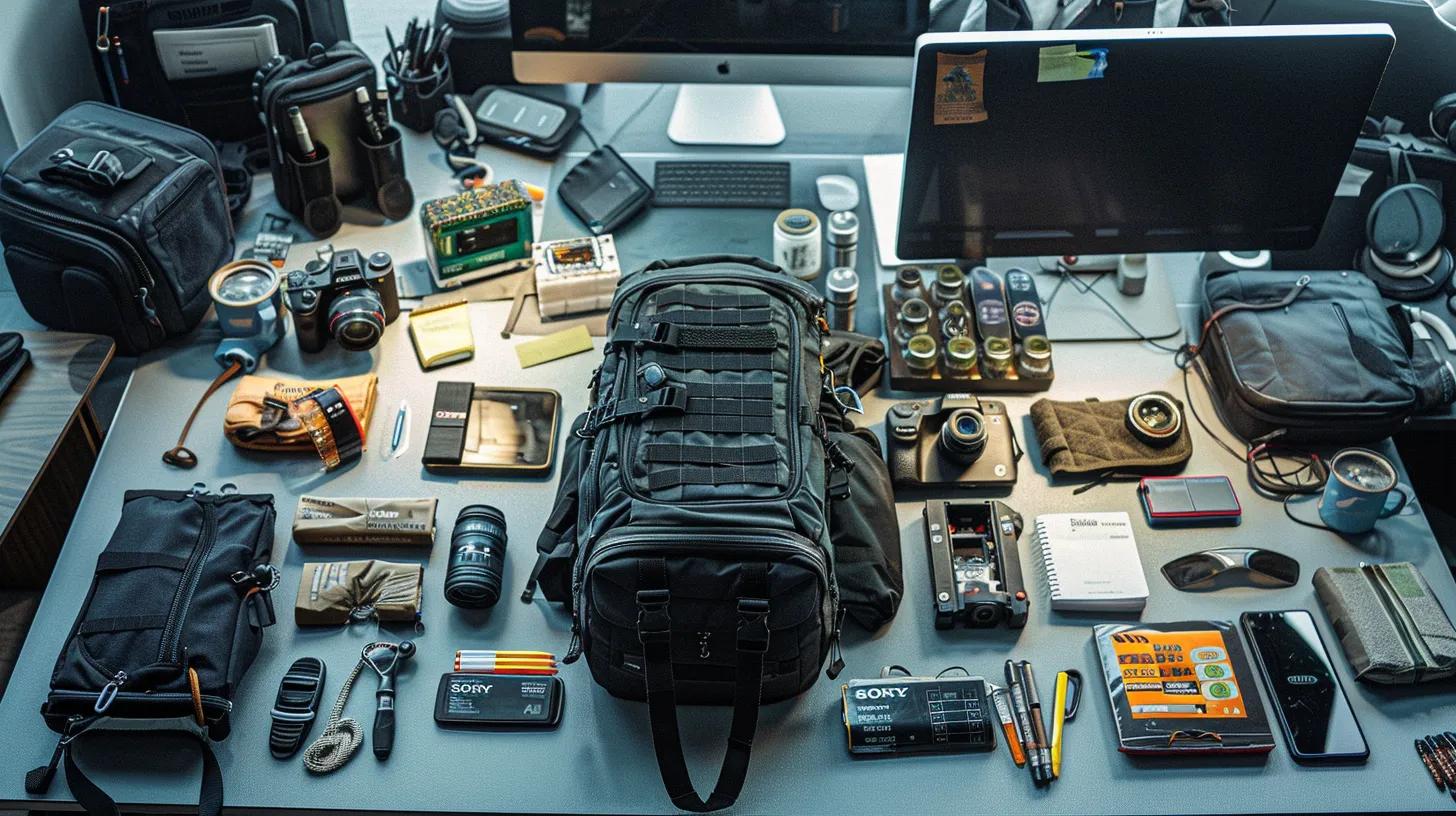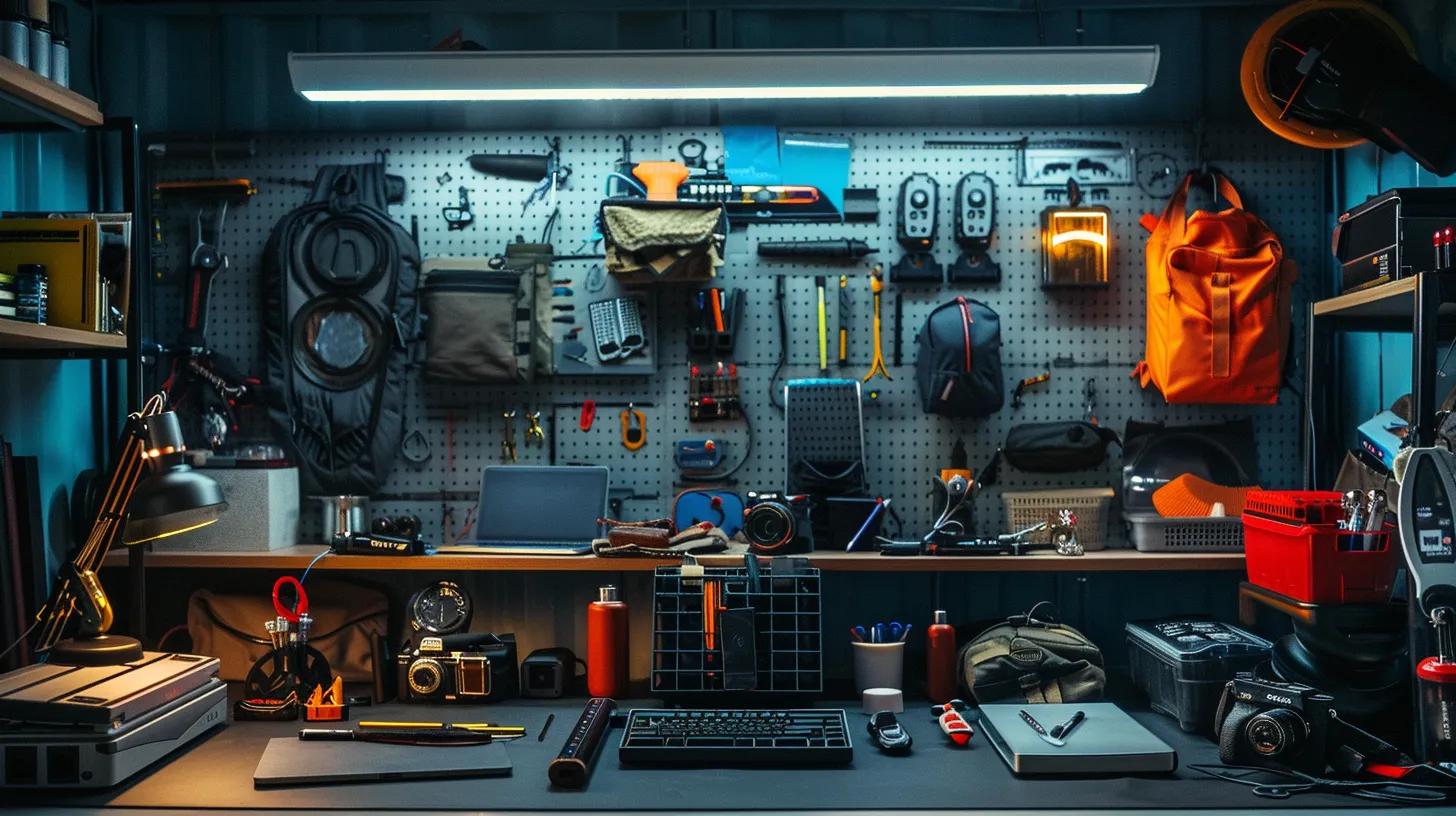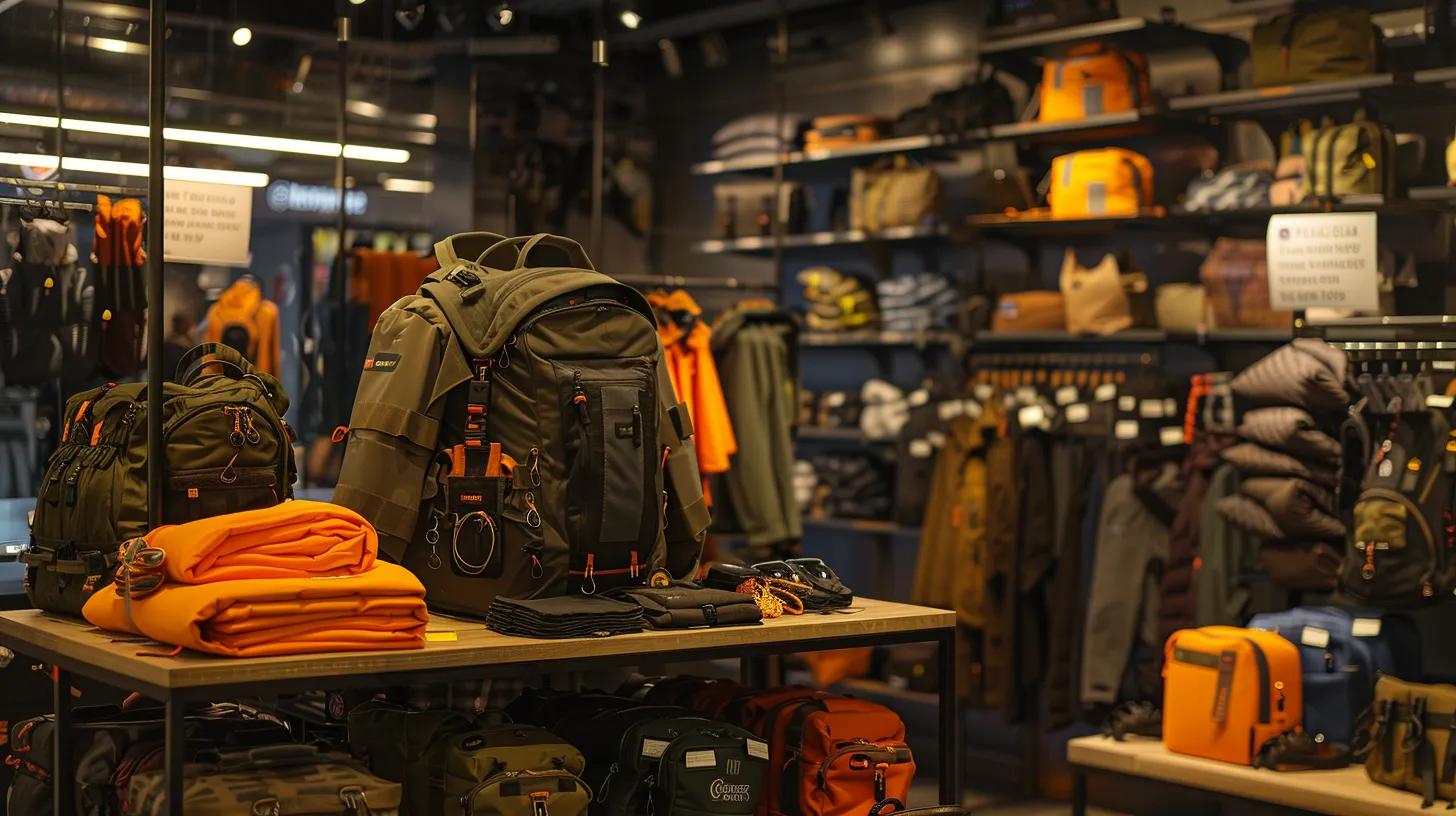When disaster strikes, a well-equipped bug out bag can be the difference between survival and hardship. This guide details the core essentials, offers customization tips for different scenarios, and explains how to pack and maintain your go bag. Preparedness empowers individuals and families during crises—from natural disasters to urban emergencies—ensuring vital supplies are always at hand. Mountain Ready provides expert advice and practical checklists to help you build a durable, lightweight, and effective bug out bag.
What Are the Must-Have Core Essentials for Your Bug Out Bag?
Every bug out bag must address basic human needs in an emergency. Essential items include water, food, shelter, medical care, navigation, and communication tools to support survival.
Why Is Water the Most Critical Item in Your Bug Out Bag?
Water is fundamental because dehydration sets in quickly. Carry a reliable water source using portable water filters, purification tablets, or collapsible containers. It is crucial to have a water filter with a high micron rating and extra water storage to maintain hydration until help arrives.
How to Choose and Pack Food for Emergency Survival?
Select nutrient-dense, non-perishable foods such as dehydrated meals, energy bars, jerky, and freeze-dried fruits. Choose compact, lightweight options that provide balanced macronutrients and vitamins. Store food in waterproof, airtight containers and aim for at least a three-day supply to sustain energy during stressful conditions.
What Shelter Options Should You Include for Protection?
Include portable shelter options to protect against the elements. A compact tent, emergency bivvy, sleeping bag, or space blanket can provide critical insulation and weather protection. Lightweight tarps or emergency shelters can serve as makeshift covers when privacy and security are needed.
Which First Aid Supplies Are Essential for Every Emergency?
A robust first aid kit is indispensable. Include adhesive bandages, sterile gauze, antiseptic wipes, pain relievers, and a tourniquet. Also pack personal medications, burn cream, scissors, tweezers, and a CPR mask. Regularly check expiration dates and update your supplies to ensure they remain reliable.
What Navigation Tools Are Necessary for Bug Out Bag Success?
Navigation is vital. Include a regional topographic map, a compass, and a GPS device with extra batteries. Additionally, a whistle or signaling device can help attract assistance if you become lost. These tools offer directional guidance and essential signaling options.
How Do Communication Devices Enhance Your Emergency Readiness?
Reliable communication devices help bridge isolation. Pack a fully charged mobile phone with a power bank, a two-way radio, and a portable solar charger. In areas where networks fail, satellite phones or emergency radios provide critical updates and access to help.
How Do You Customize Your Bug Out Bag for Specific Emergencies?

Customize your bug out bag based on the type of emergency, location, and individual needs. Tailor supplies to match environmental factors, mobility constraints, and family or pet requirements. Understand unique threats—urban, wilderness, or special circumstances—to efficiently adjust your gear.
What Items Should Families Include in Their Bug Out Bags?
Family bug out bags require additional supplies. Pack extra food, water, clothing, and medications along with comfort items for children, such as small toys or blankets. A family first aid kit and extra copies of key documents are essential to ensure every member is protected.
How to Adapt Your Bug Out Bag for Urban Survival Scenarios?
Urban bags should be streamlined and lightweight. Include multi-tools, personal defense items, a compact flashlight, and digital navigation aids. Due to rapid evacuation needs in urban settings, also consider a personal alarm and emergency cash to navigate potential infrastructure issues.
What Are the Best Bug Out Bag Essentials for Wilderness Survival?
For wilderness survival, focus on sustainability and self-reliance. In addition to water purification systems and non-perishable food, incorporate a durable shelter such as a bivvy sack, fire starters, and a survival knife. Other essentials include insect repellent, a robust first aid kit, and reliable navigational tools.
How to Prepare a Bug Out Bag for Seniors and Special Needs?
For seniors and those with special needs, prioritize accessibility and simplicity in design. Organize medications in easy-to-reach compartments and include any necessary mobility aids. Pack extra layers of warmth, pre-packaged foods requiring minimal preparation, and clear usage instructions for all items.
What Should You Pack for Pets in Your Bug Out Bag?
Pets are family too. Pack food, water, a collapsible bowl, leash, and waste bags. Also include pet-specific medications, a small toy, and a comfortable blanket to help reduce stress during evacuation.
How Can You Effectively Pack and Manage the Weight of Your Bug Out Bag?
Effective packing and weight management ensure your bag remains practical and portable. Distribute gear evenly to avoid strain and use techniques that maximize space while protecting your equipment.
What Are the Best Packing Techniques to Maximize Space?
Organize items by frequency of use. Roll clothing instead of folding, use compression sacks for bulky items like sleeping pads, and separate compartments for quick access. Arrange items in the order of use to streamline the evacuation process and ensure essential tools are within reach.
How Much Should Your Bug Out Bag Weigh for Optimal Mobility?
Aim for a bug out bag that weighs between 20–30% of your body weight. Selecting high-quality, lightweight gear and routinely assessing each item ensures you remain mobile and efficient in emergency situations.
Which Lightweight Gear Offers Maximum Survival Benefits?
Opt for lightweight, high-efficiency gear such as titanium or aluminum multi-tools, compact water filters, and ultralight shelters. Advances in materials like high-strength nylon and polymer composites help reduce overall weight without sacrificing durability.
What Tools and Gear Are Essential Beyond Basic Supplies?

Specialized tools and gear can greatly improve survival in complex or prolonged emergencies. These items provide versatility and backup support beyond everyday essentials.
Which Multi-Tools and Survival Knives Should You Include?
Include high-quality multi-tools and survival knives with corrosion-resistant blades, serrated edges, and multiple functions (e.g., can openers, screwdrivers). These reliable tools, designed for extreme conditions, often replace several individual items in your kit.
How Do Fire Starters and Lighting Improve Your Survival Chances?
Fire starters and lighting are critical for warmth, cooking, and signaling. Equip your bag with a ferrocerium rod, waterproof matches, and a compact flashlight or headlamp. These tools help you quickly generate fire for heat or cooking and signal rescuers in low-visibility conditions.
What Clothing and Weather-Resistant Gear Are Necessary?
Pack clothing that shields against environmental hazards: moisture-wicking layers, waterproof jackets, insulated gloves, and durable boots. Weather-resistant items like windproof pants, hats, and sunglasses support comfort and safety when conditions change suddenly.
How to Maintain Personal Hygiene and Sanitation in Emergencies?
Include travel-sized soap, hand sanitizer (with at least 60% alcohol), and disinfectant wipes in your kit. Also, pack a toothbrush, toothpaste, feminine hygiene products, waste disposal bags, and a small roll of toilet paper. Maintaining hygiene helps prevent infections when professional medical help is not available.
How Do You Maintain and Replenish Your Bug Out Bag Over Time?
Regular maintenance and updates are crucial to keep your bug out bag ready for use. Inspect your gear periodically, replace expired items, and adjust your supplies to match seasonal and situational changes.
When and How Should You Update Your Bug Out Bag Contents?
Review your bag’s contents every six months. Check expiration dates on food, medications, and water purification tablets; inspect equipment for wear; and remove outdated maps or documents. An annual review tailored to your geographic risks and family needs will help maintain an optimal, current kit.
What Are the Best Practices for Storing and Inspecting Your Gear?
Store your bug out bag in a cool, dry place away from direct sunlight and moisture. Regular inspections for damage or degradation, along with keeping original packaging for critical components, help ensure that everything remains mission-ready.
How Can You Stay Informed About New Emergency Preparedness Trends?
Stay updated by subscribing to trusted survival blogs and attending relevant training seminars. Follow reputable organizations and participate in local survivalist groups to learn about advances in gear technology and innovative emergency strategies.
Where Can You Find Reliable Bug Out Bag Products and Expert Advice?

Reliable products and expert advice are key to assembling an effective bug out bag. Trusted sources ensure that gear meets high quality standards and recommendations are based on real-world experience.
What Makes Prepared Life Outfitters’ Bug Out Bags Unique?
Prepared Life Outfitters’ bags are designed with military-grade materials and innovative organizational features. Their bug out bags are built to be highly durable and customizable, with performance data and customer testimonials to back their reliability.
How to Choose the Right Products for Your Bug Out Bag Needs?
Consider weight, durability, functionality, and ease of use when choosing products. Read independent reviews, test gear under realistic conditions, and invest in reputable brands to ensure each item contributes effectively to your survival strategy.
Where to Access Educational Resources and Survival Tutorials?
Access a wealth of educational resources through online platforms, survival forums, and official emergency preparedness websites. Detailed tutorials, product reviews, and local training workshops can build practical skills and confidence in managing your emergency gear.
What Are the Most Common Questions About Bug Out Bags?
Addressing common questions helps both beginners and experienced preppers refine their strategies and ensure a comprehensive preparedness plan.
What Should Be Included in a Bug Out Bag for Beginners?
Start with water, non-perishable food, basic shelter, a first aid kit, navigation tools, and essential communication devices. Gradually enhance the bag as your experience and needs grow.
How Long Will a Bug Out Bag Sustain You in an Emergency?
Most bags are designed to sustain an individual for at least 72 hours. However, increasing your supplies according to the expected duration of the emergency can extend survival.
What Is the Best Way to Organize a Bug Out Bag Checklist?
Organize your checklist by categories—water, food, shelter, first aid, tools, and personal items—and update it regularly. Using both digital and physical checklists helps ensure nothing is overlooked or expired.
How Do You Balance Weight and Preparedness in Your Bug Out Bag?
Balance is key. Choose multifunctional, lightweight items and customize your bag to reflect specific threats. Regular evaluations and practice trips help achieve the optimal balance between mobility and essential supplies.
Frequently Asked Questions
Q: How do you determine which food items to pack in a bug out bag? A: Prioritize shelf-stable, high-calorie, nutrient-dense foods like energy bars, freeze-dried meals, or jerky that require minimal preparation and have a long shelf-life.
Q: What is the most vital tool for navigating in emergencies? A: A reliable compass combined with a topographic map is essential because these traditional tools work independently of digital technology.
Q: Why is regular maintenance of your bug out bag important? A: Regular inspections and updates ensure that items remain functional, the gear does not degrade, and supplies are adjusted for seasonal or personal needs.
Q: Can you customize a bug out bag for specific weather conditions? A: Yes, selecting weather-resistant clothing, shelter, and gear tailored for extreme temperatures significantly enhances survival prospects.
Q: How often should one update their emergency supplies? A: It is advisable to review and update supplies at least every six months, replacing perishable items and outdated equipment.
Final Thoughts
Mountain Ready emphasizes that a well-assembled bug out bag is more than just a collection of items—it is your lifeline during emergencies. A balanced, customized bag that evolves with your needs can significantly improve your chances of survival. Regularly updating gear, mastering effective packing techniques, and tailoring supplies to meet specific scenarios will ensure that your preparedness remains uncompromised, providing enhanced safety and confidence when facing unforeseen challenges.


